Huseby Bruk is a fine destination in Småland with old mill environments, castle, park, restaurant, shops and exhibitions. The mill is like a time bubble that shows what it looked like here when the last owner, Miss Florence Stephens, lived here.
Innehållsförteckning
Huseby mill
Huseby Bruk functioned for a long time as an ironworks and was also the site of the 'Huseby affair'. Today it is Kronoberg County's most popular tourist destination, with around 150,000 visitors per year.
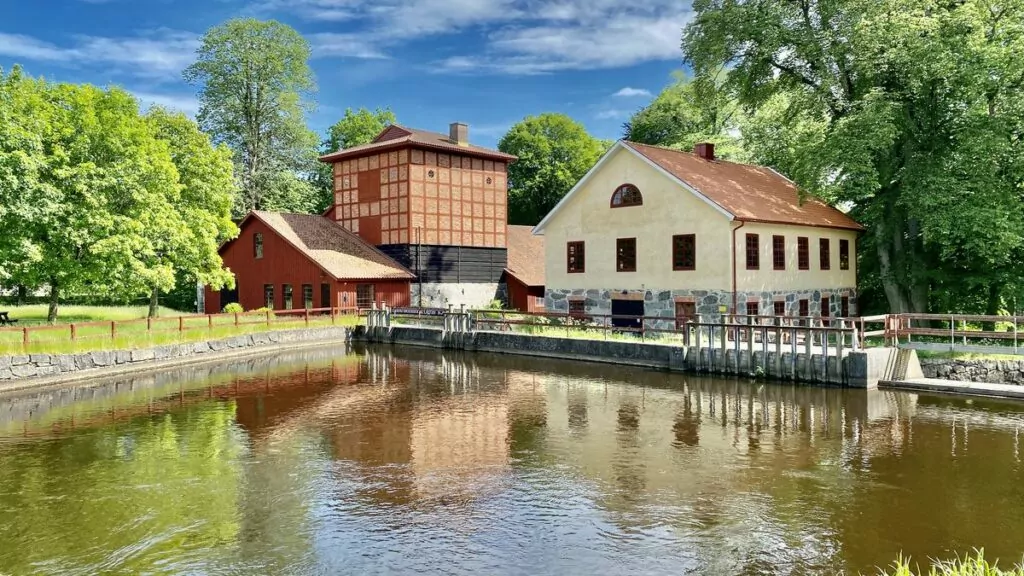
Huseby Bruk is located in Småland, about 22 kilometres south of Växjö.
From tiled stoves to the 'Huseby affair'
In the 17th century, Carl Carlsson Gyllenhielm, son of the King and Imperial Admiral, established an ironworks at Huseby Farm. They used lake ore from the lakes in the area and over time the business became large-scale, with large production of cannons and tiled stoves.
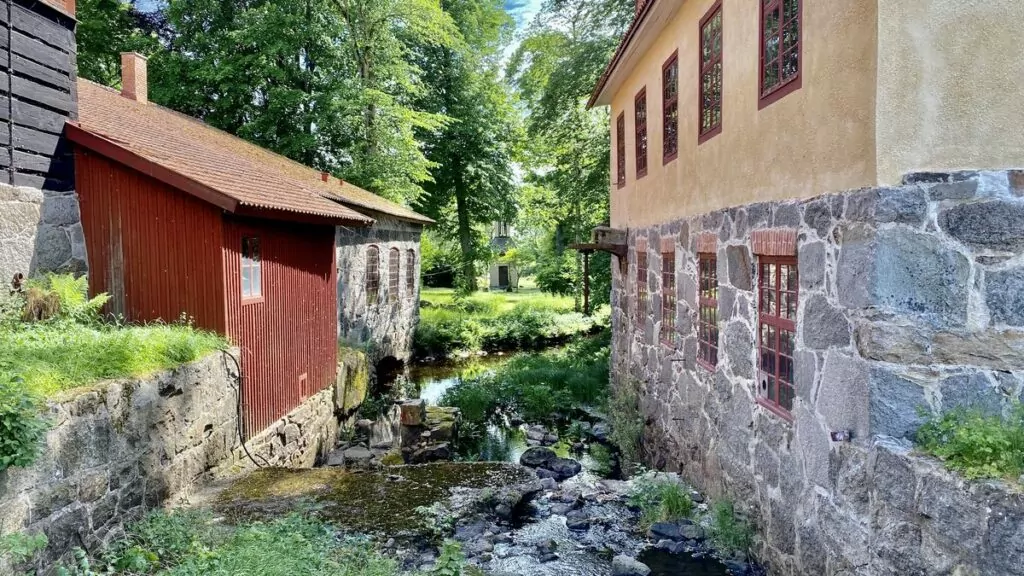
At the end of the 18th century, the mill was taken over by the Hamilton family, who built the current manor house. In 1867, the family was forced to sell the mill and the new owner was Joseph Stephens.
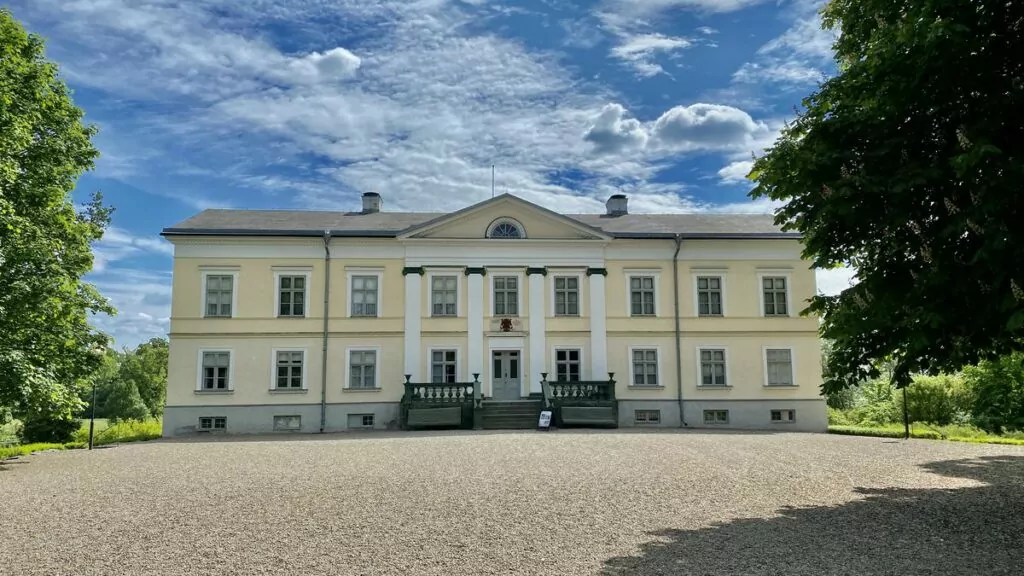
When Stephens bought the property, in addition to the ironworks, sawmill and mill, it also included 46 agricultural properties and about 6000 hectares of land. He left the mill for a period in India, but on his return he built up a business of farming, forestry, ironworks and horse breeding.
After Stephens' death, one of his three daughters, Miss Florence Stephens, took over. She was tragically defrauded of large sums of money - an affair known as the 'Huseby affair' - and was declared incompetent as a result. Miss Florence remained in her beloved Huseby Castle, as she called it, until her death. She then bequeathed it to the state.
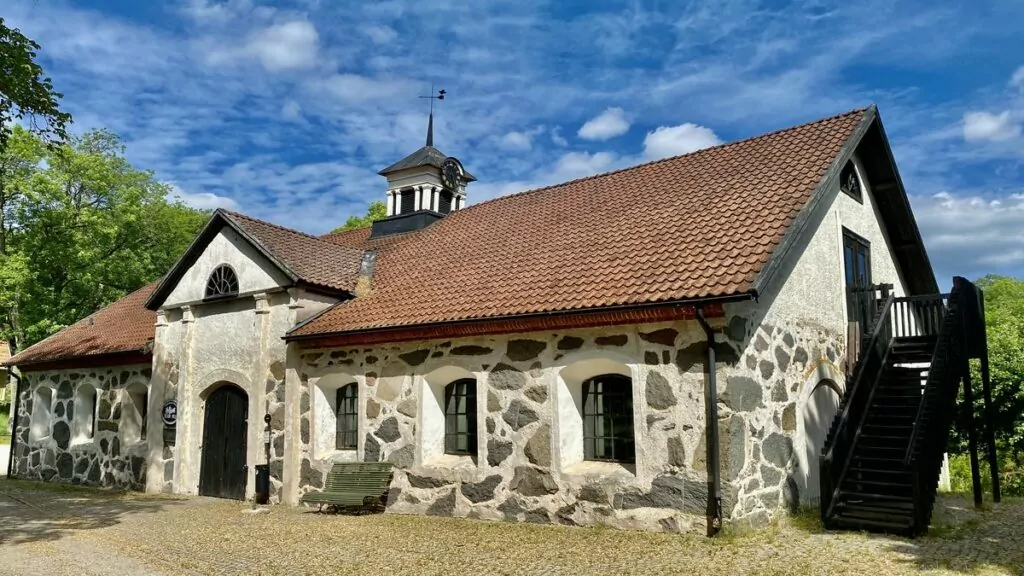
Visiting Huseby Mill
We arrived at Huseby Mill after closing time, before the high season and during a period of corona restrictions. We probably did not get a completely fair picture of the destination. There are beautiful old buildings, but usually also museums, exhibitions, shops with crafts, a restaurant and a café. There are also guided tours of the castle and activities such as walking theatre, yoga, concerts and "dilemmas" to be solved.
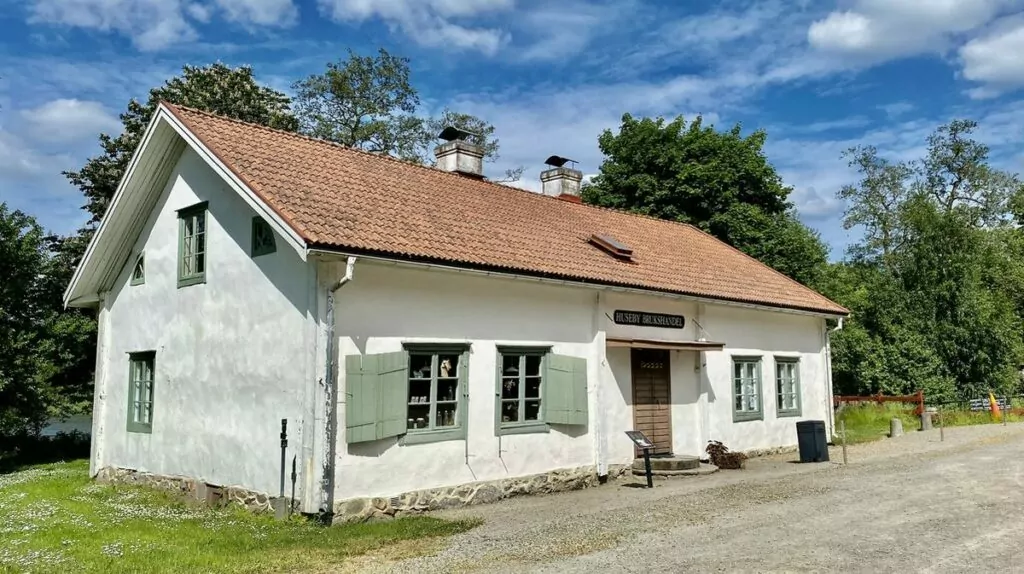
We had a few minutes to talk to the staff inside the tourist information/shop and then we walked around on our own. We looked at all the nice old buildings, and among other things we stopped at the "Transmission House".
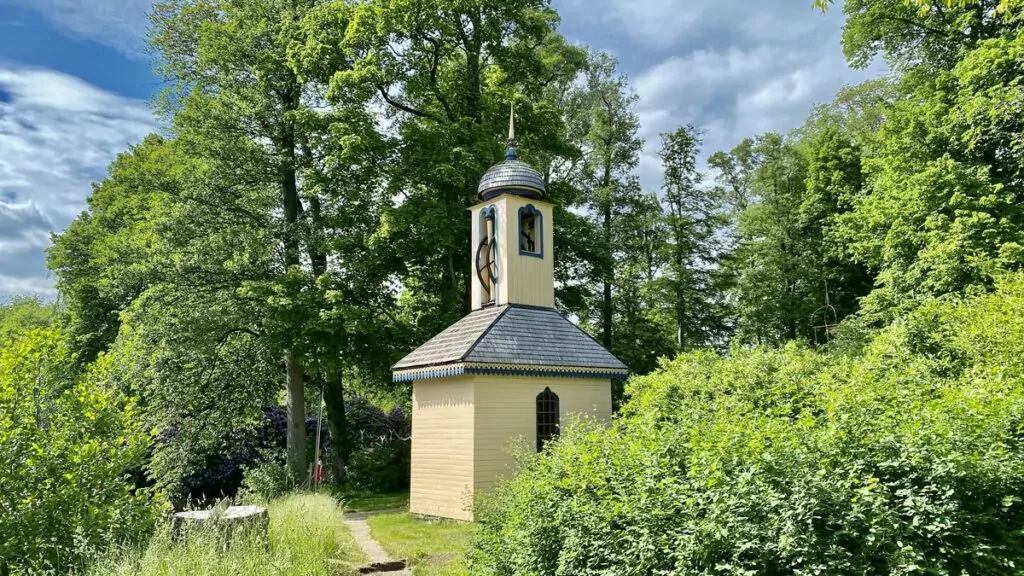
The house contains a so-called 'Archimedes screw', which was installed to mechanically convey water from new crops into the Holy River. The screw was installed in 1884 and the house was designed as an oriental-style gazebo. The house was also used as a playhouse for the three Stephens sisters.
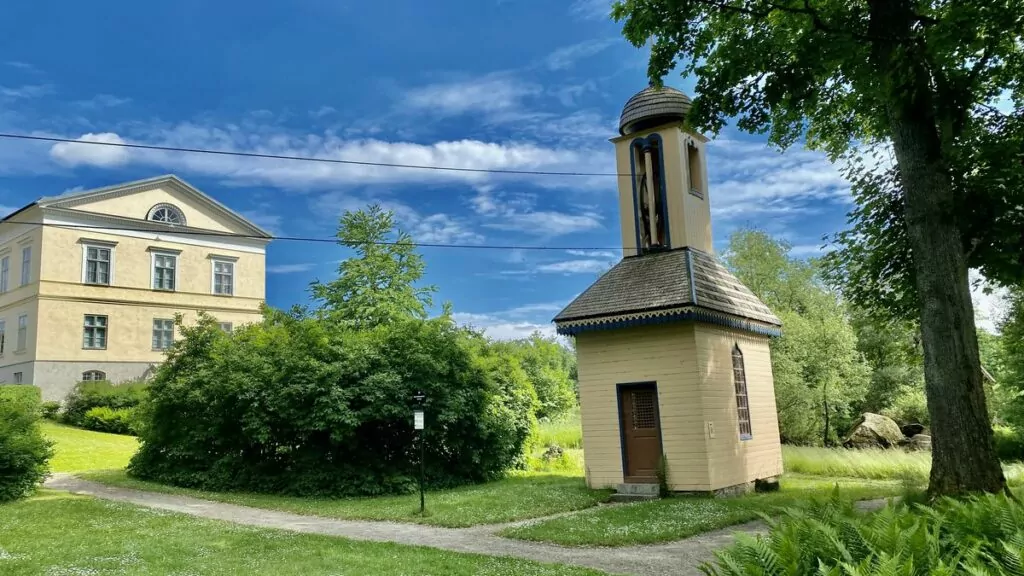
Park and garden
In any case, we arrived just in time to experience the rhododendron park. Absolutely fantastic!
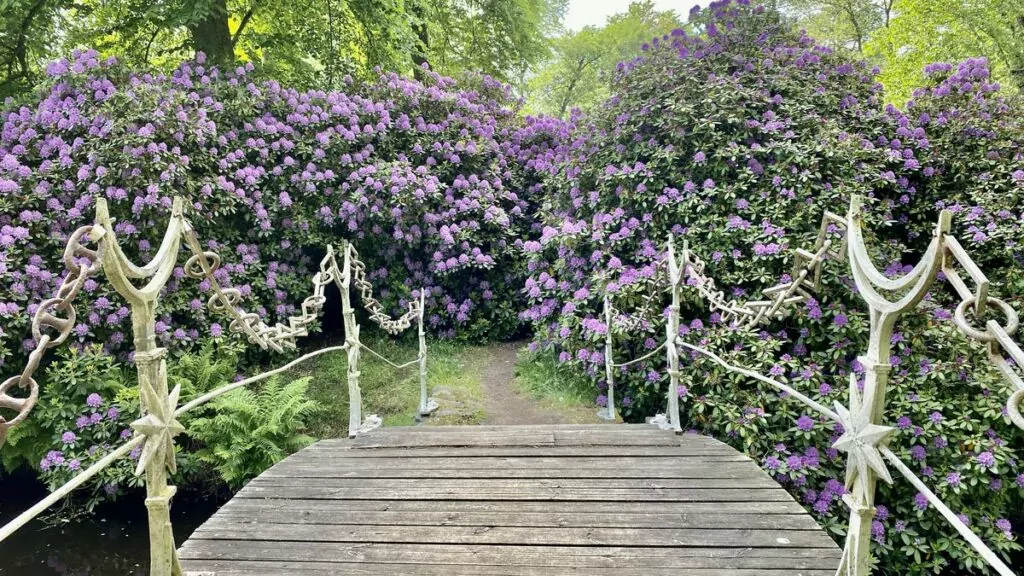


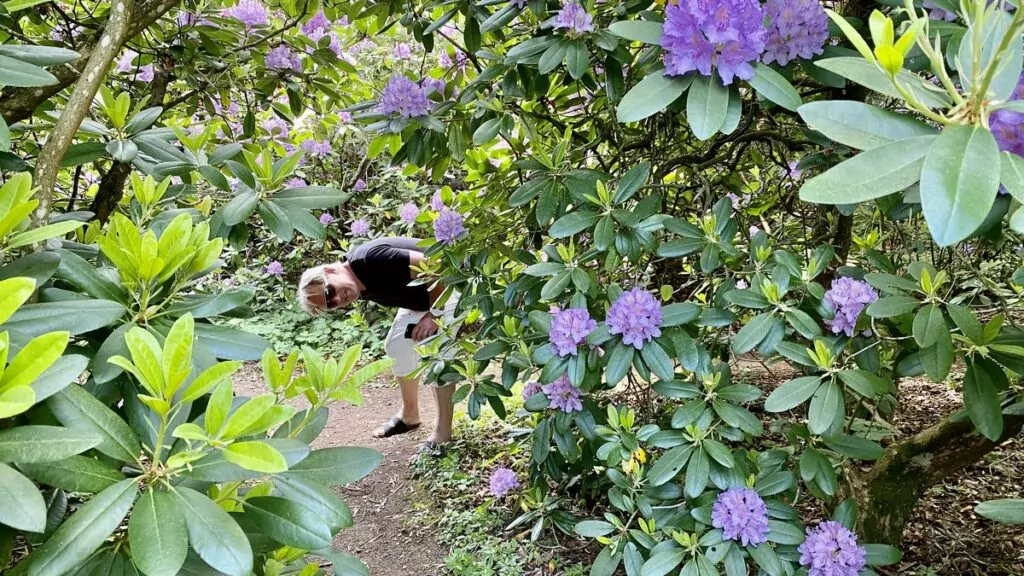
We also checked out the gardens with all the crops. Nice! We can definitely recommend Huseby Bruk as a destination, and the experience will certainly be even better if you come here when everything is open.
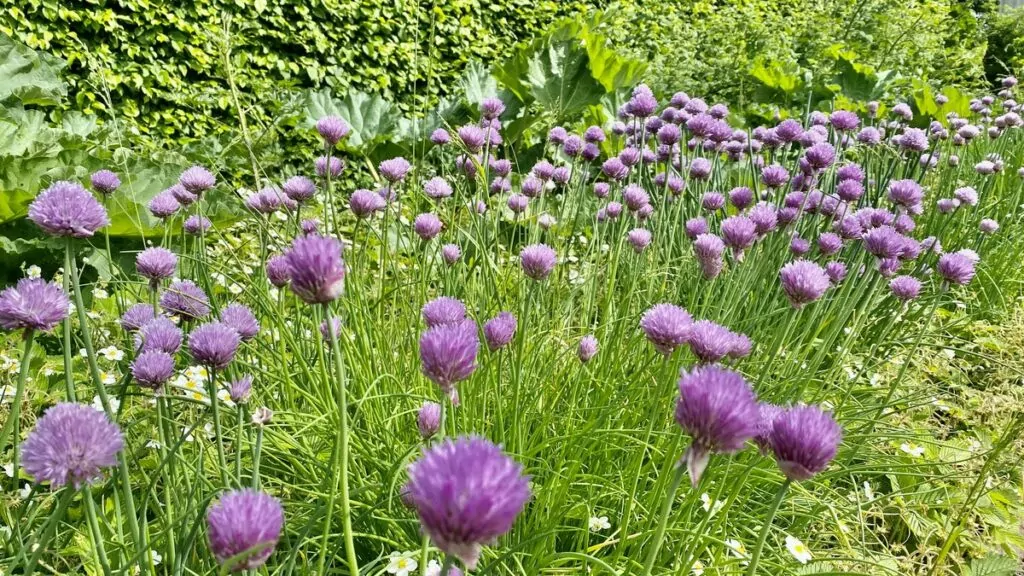
See more in the neighbourhood
If you want to see more in the neighbourhood, you can visit Växjö, where you can see Växjö Cathedral, Småland Museum and more, Kronoberg castle ruins and Teleborg Castle. It is also interesting to visit the beautiful old churches in the area. Granhult church and Dädesjö Old Church. Another tip is Car cemetery Kyrkö mosse outside Ryd in Tingsryd municipality.
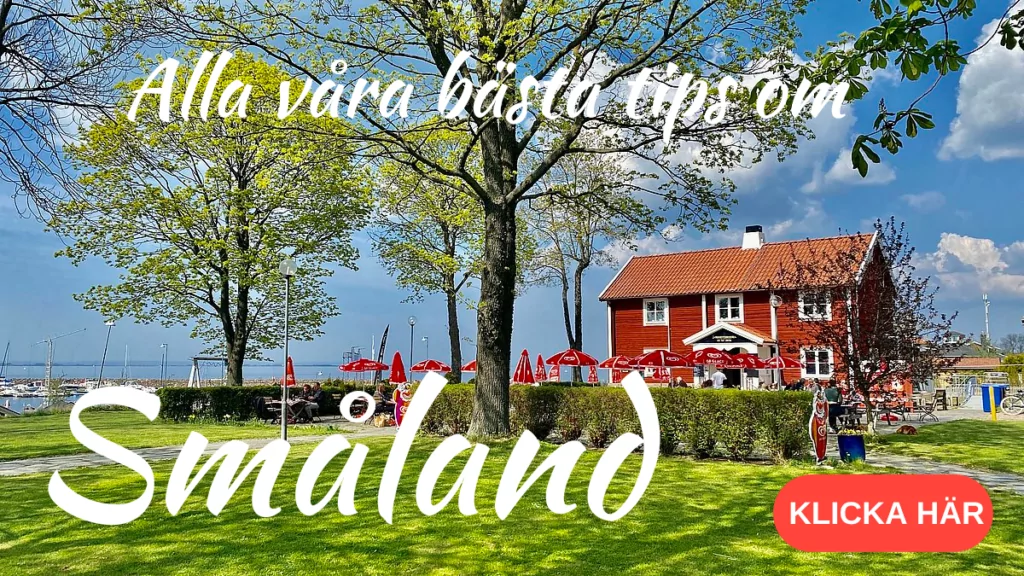
Kalmar läns museum - about the regal ship Kronan
Kalmar County Museum offers a very exciting exhibition about the regal ship Kronan, which sank in...
What to do on Visingsö - 12 tips for Vättern's largest island
What can you do on Visingsö? First of all, you can take it easy and...
What to do in Jönköping - 17 tips for the matchstick city
What to do in Jönköping? The city is famous for its matchstick history and you should...
Swedish Smålandsvägen - FREEDOMtravel Themed roads
The Swedish Småland Road is a themed road that takes you through beautiful Småland,...
Kosta Christmas market - a wonderful Christmas atmosphere in the Kingdom of Crystal.
Kosta Christmas Market is part of the Christmas celebrations in Kosta, in the Kingdom of Glass. Here you can experience ...
Granhult church in Småland - Sweden's oldest wooden church
Granhult Church in Småland is Sweden's oldest wooden church. This fine little wooden church, dating from the 1220s, survived...
Kosta Art Gallery - exciting art in the Glass Kingdom
Kosta Art Gallery is an art gallery in the Glasriket region of Småland, showcasing glass art by...
IKEA Museum in Älmhult - fascinating about a department store
The IKEA Museum tells the story of the huge furniture store founded in 1943, as a mail order company, by...
Blowing glass - try it at the Kosta Glass Centre
Want to try blowing glass? At the Kosta Glass Centre you can create your own...
Vidinge gård och ställplats - dog-friendly accommodation in Småland, Sweden
Vidinge Farm is a dog-friendly accommodation in Småland, a camping site, a fishing centre and a starting point for...
Things to do in Glasriket - 25 tips for sights and experiences
What to see and do in Glasriket in Småland? We have travelled around...
Tättö Havsbad - nice campsite by the sea
Yesterday we ended up at a campsite at Tättö Havsbad, in Loftahammar north of Västervik. We...
Europe's longest zipline - Sweden Zipline in Småland.
Europe's longest zipline course is in Sweden, deep in the forests of Småland. Of course...
Lysingsbadets camping - Västervik Resort in Västervik
We have now travelled to Lysingsbadets camping, which is located just outside Västervik. This...
Kalmar castle - 800 years of war, celebration and power games
Kalmar Castle is a powerful building, which feels both historic and fairytale-like where it travels...
What to do in Eksjö - 11 tips for the wooden city in Småland
What to do in Eksjö? This town in Småland, often referred to as 'the unique wooden town'...
Teleborg Castle in Växjö - a fairytale castle in Småland
Teleborg Castle is a beautiful fairytale castle just outside Växjö. Here you can enjoy the...
Ödevata farm hotel and caravan park - sustainable in Småland
Ödevata gårdshotell in Småland is a cosy, simple and natural hotel, where you are also...
Kronoberg castle ruins in Växjö - Vasa and the Dacke feud
Kronoberg Castle Ruin is a well-preserved historical ruin that tells interesting stories about Gustav Vasa and...
Mönsterås by campervan - festival and camping site
In Mönsterås, between Oskarshamn and Kalmar, we were greeted by a blues festival, long-haired guys in leather clothes, pick-up trucks,...
The Kyrkö bog car cemetery - a different kind of attraction
The Kyrkö mosse car cemetery outside Ryd in Tingsryd municipality is an unusual sight, to say the least. My ...
The Matchstick Museum in Jönköping - an engaging story
The Matchstick Museum in Jönköping tells the story of a time of child labour and terrible working conditions, but also of...
What to do in Gränna - 9 tips for the candy cane town at Lake Vättern
What can you do in Gränna? Many would probably answer "eat candy canes" and that's...
Things to do in Växjö - 15 tips for sights and experiences
What to see and do in Växjö? Växjö is a pleasant city that offers...
Husqvarna museum - and more to do in Huskvarna
The Husqvarna Museum in Huskvarna tells the story of a company that started making rifles in the 17th century....
The emigrant village in Småland - in the footsteps of Vilhelm Moberg
The Utvandrarbygden in Småland is the area that many Swedes left to emigrate to...
James Bond museum in Småland - the world's only Bond museum
James Bond Museum in Småland - why is it here and can it really be...
Lessebo hand-paper mill - try making paper
Lessebo handmade paper mill in Småland is something so special as a still-functioning mill where the...
Things to do in Kalmar - 17 tips for experiences and attractions
What to do in Kalmar? Well, we'll tell you! Kalmar is a...
Trolls in Gamleby - Friends of the Garpe Sculpture Park
Trollen i Gamleby, or Friends of Garpe Sculpture Park, is a different kind of sculpture park in Västervik....
Gamleby camping - Kustcamp Gamleby
Now we have arrived at Gamleby camping, not far from Västervik. The campsite is large...
Have you visited Huseby Mill? How was your experience? Do you have any other tips for things to see and do in the area?
Facts about Huseby Bruk
- Municipality: Alvesta
- County: Kronoberg County
- Landscape: Småland
- Location: By the river Helige, between the lakes Salen and Åsnen
- The name: The oldest mention of the place is from 1419, when it was called Hosaby. The name describes the village's location at the mouth of the river Helgeån in Lake Åsnen.
- Read more: You can find more information at the mill's website.
Tours and activities
- Buildings: You can visit the various buildings, such as the Mill, the Old Forge, the Mechanical Workshop, the Blast Furnace, the Dairy and the Sawmill.
- Views: Sometimes the castle/mansion is shown with a guide.
- Exhibitions: Several different permanent and temporary exhibitions are on display.
- Shops: The area has several shops selling flowers, ceramics, crafts and more.
- Activities: Promenade theatre, castle yoga, concerts, dilemmas to be resolved, etc.
- Book the castle: You can book the castle for group tours, afternoon tea or a royal dinner.
Services and practical information
- Opening hours: The park and garden are always open. For current opening hours in the shop, restaurant and castle, see the estate's website.
- Prices: Prices vary, see the mill's website.
- Food service: Elisabeth's Garden, restaurant and café. There are also outdoor tables where you can eat your own packed lunch.
- Toilets: When the area is open, there are toilets in several places. During the low season, there is only a toilet in Gamla Smedjan during opening hours.
- Rules: You can bring your dog into the grounds (but not into the castle or restaurant) as long as it is on a lead.
- Accommodation: There is a farmhouse and two overnight rooms to book.
Accessibility
- Parking: Parking for people with reduced mobility is available at the restaurant and in the grounds.
- Toilets: Accessible toilets are available in Gamla Smedjan and in Elisabeths Trädgård Restaurant & Café.
- Accessibility in buildings: Some of the buildings are accessible, but as the area is listed, this does not apply to all buildings.
History at Huseby Mill
- 15th century: The oldest form of the village name, Hosaby, is from this period. Various people owned the farm in the village, including the bishop of Växjö and the knight Magnus Sture.
17th century
- 1629: The king's son and Imperial Admiral Carl Carlsson Gyllenhielm came and built an ironworks. The mill used lake ore, which was taken from the large lakes in the area.
- 1630s: The casting of cannons and iron tile stoves, known as setting stoves, began.
- 1642: Arnold de Rees from Holland obtained a lease on the mill and developed it on a large scale.
- 1677: Operations were temporarily suspended.
- 1689: The brothers Peter and Paul Rudebeck leased Huseby Gamlegård and got the mill going again.
18th to 19th century
- 1792: Count Axel Hamilton took over the mill and added more farms.
- 1814: The estate was inherited by Earls Hugo and Malcolm Hamilton.
- 1844: The new mansion was completed.
- 1867: The estate was sold to Joseph Stephens. Joseph fell in love with Anna, the daughter of diplomat Gunnar Olof Hyltèn-Cavallius. When the engagement was broken, Joseph moved back to India, where he worked as a railway builder. He later returned to the mill.
- 1880: Joseph married Elisabeth Kreuger
20th century to present
- 1930: Pig iron ceased to be produced at the mill.
- 1934: Joseph Stephens died and his daughter Miss Florence inherited the mill.
- 1954: Until this year, the foundry was in operation.
- 1950s: Huseby was at the centre of the so-called Huseby affair. The affair involved the owner, Miss Florence Stephens, being swindled out of large sums of money and eventually declared incompetent.
- 1979: Florence Stephens died and the property was bequeathed to the state.
- 1996: Since this year, Huseby Bruk has been managed by the National Property Board. Visitor activities are conducted by Huseby Bruk AB, a municipal company.

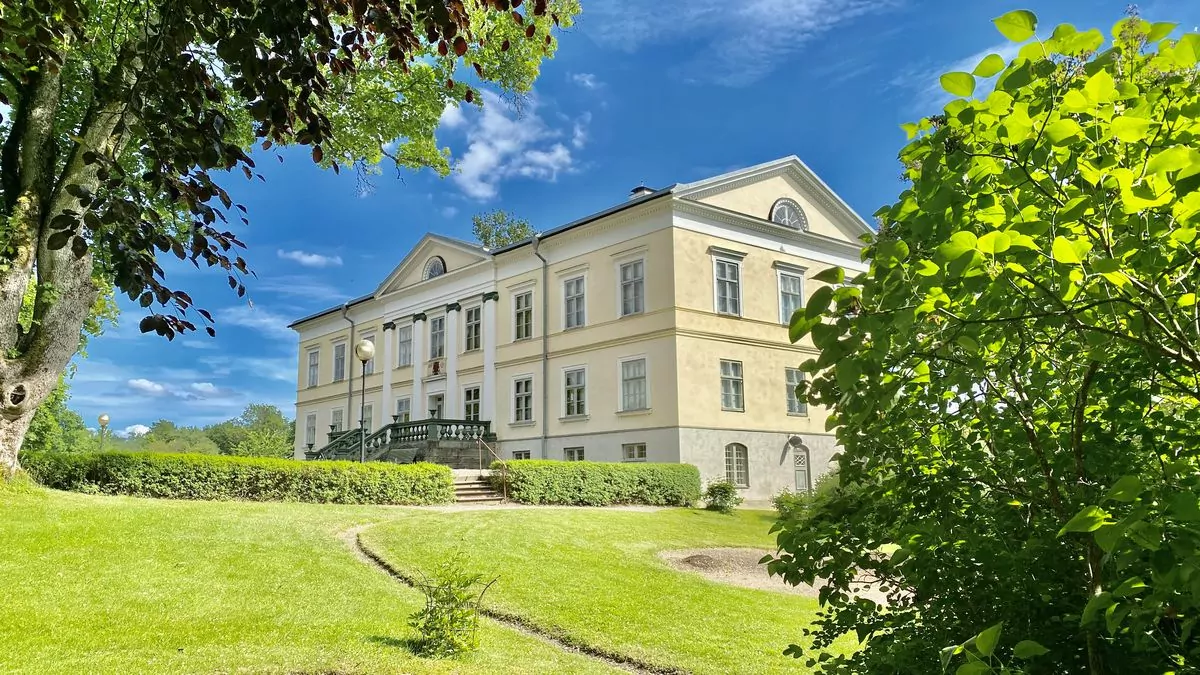












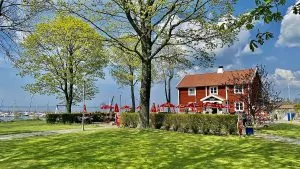
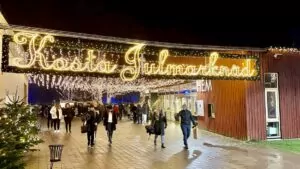
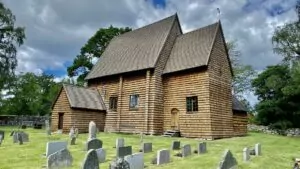
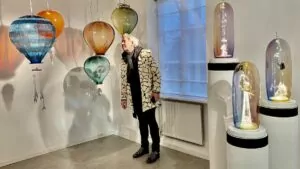

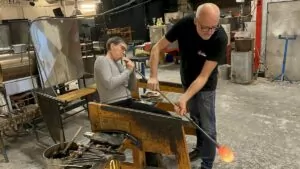
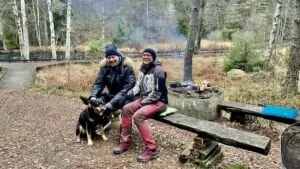
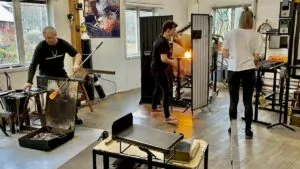


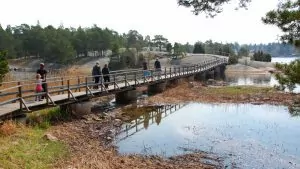

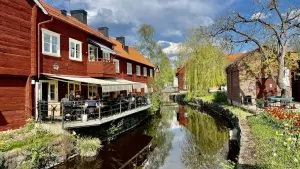

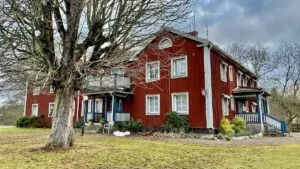



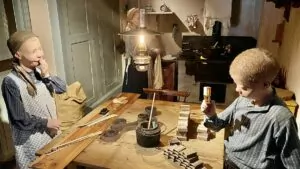
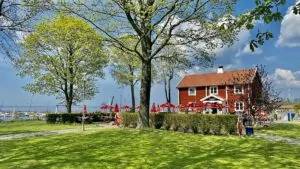
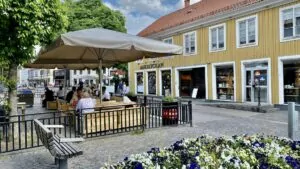
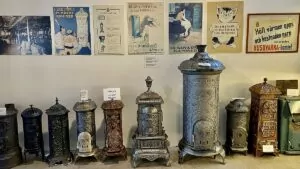
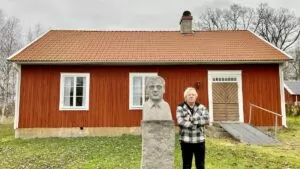

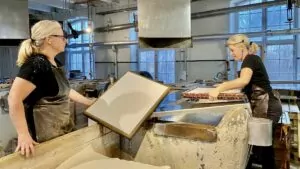
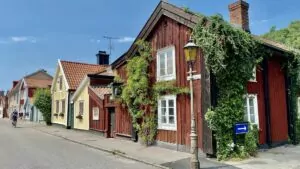

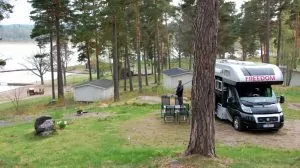
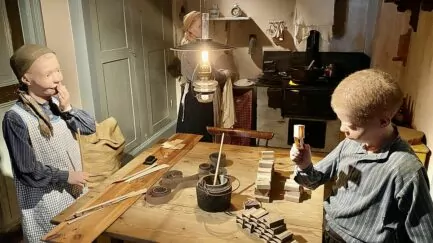


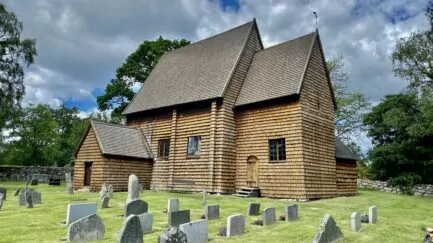
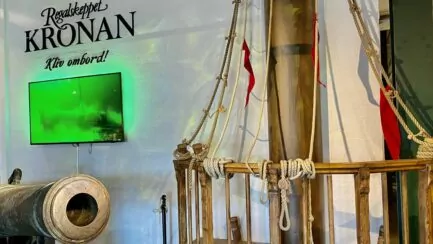
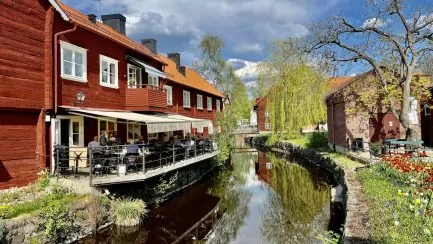



Veiken says:
I remember the uproar when the Huseby affair was on the agenda. What strikes me today when I read your text is that Florence, under the age of majority, was able to bequeath the property to the municipality. That will should be invalid if she did not write it when she was "in her right mind".
22 June 2021 - 7:46
Helena says:
I think she got her authority back later in life, if I remember correctly. I didn't get that in the text, so good reflection!
23 June 2021 - 10:25
Veiken says:
I couldn't help but look it up. She came of age again in 1976, but was not made responsible for managing the estate. Hmmmm.....
24 June 2021 - 17:47
Solan says:
We were there in freezing cold May, only the info centre open. I've rarely seen a shop with such a nice selection at a visitor centre.
In July we will go there again to see the flower show. And the inside of the big house...👍😎!
22 June 2021 - 8:34
Helena says:
Do not think we had time to look so carefully at the selection because they would close in a minute type 😉 Lovely with flower exhibition! I could also imagine coming back and seeing the mansion inside and other things! 🙂
22 June 2021 - 19:28
Ann-Louise Paulsson says:
Have only been there in the winter, at the Christmas market and then it was beautiful but very cold. 🙂
22 June 2021 - 10:09
Helena says:
A Christmas market sounds cosy!
22 June 2021 - 19:30
Matts Torebring says:
For us it is nice to go there for the Christmas fair. I am fascinated by the fact that you always know the story behind every move you make.
22 June 2021 - 10:59
Helena says:
Can imagine this is a nice place for Christmas! We like history! We don't know the history when we come, but we usually read up on it, take photos of the info signs and bring brochures with us 🙂.
22 June 2021 - 19:31
Lena+i+Wales+och+Spanien says:
I have been here several times as a tour guide and walked around the manor house on tours. So interesting.
Prince Carl was involved in the Huseby affair and there was also a trial. I think a lot has been hushed up by the royal family. There are many books written about this and also several history podcasts have addressed this affair. A tip for those who are interested.
Take care!
22 June 2021 - 14:22
Helena says:
Glad you've been here, also as a tour guide, and know the history even better! Yes, I did read something about the prince. Thanks for your comment and have fun!
22 June 2021 - 19:40
Cari says:
Can highly recommend the book Florence Stephen's Lost World.
After reading it, I really want to visit Huseby.
Thanks for the information and nice pictures.
adlibris.com/book/florence-stephens-lost-world-9789164204936
22 June 2021 - 21:22
Helena says:
Interesting! Always more fun to visit a destination when you've read something about it, especially in fiction!
23 June 2021 - 10:26
Johanna+i+Skåne says:
I also read that book a while ago, recommended!
25 June 2021 - 12:12
Pockethexan says:
What fun that I could offer some reading tips because books are a must when travelling in a motorhome!
I just have to say that you have a really nice blog with a lot to read and beautiful photos. There I am in lee that has not changed anything in all the years. Another fun thing was to read your post about Västerås. The fact is that both the husband and I have grown up in the city and have not really thought about all the unique parts that you have found, it has just been there and of course we had to read about it in school of course.
Enjoy your journey through Sweden, I will be checking in again to see what you are up to and hopefully I can come up with more reading tips.
Hugs from Pockethexan and her husband.
23 June 2021 - 1:08
Helena says:
Thank you so much! What fun to hear that you like how we developed our blog, such is so fun to hear!!!! Västerås has a lot to offer! But recognise what you say, it is easy to become home blind 😉 Greet the man and have a nice summer!!!
23 June 2021 - 10:28
Lena - gott för själen says:
What a beautiful place! I don't think I've ever heard of it. Seems worth a visit when you're in the neighbourhood.
Hug Lena
09 July 2021 - 5:51